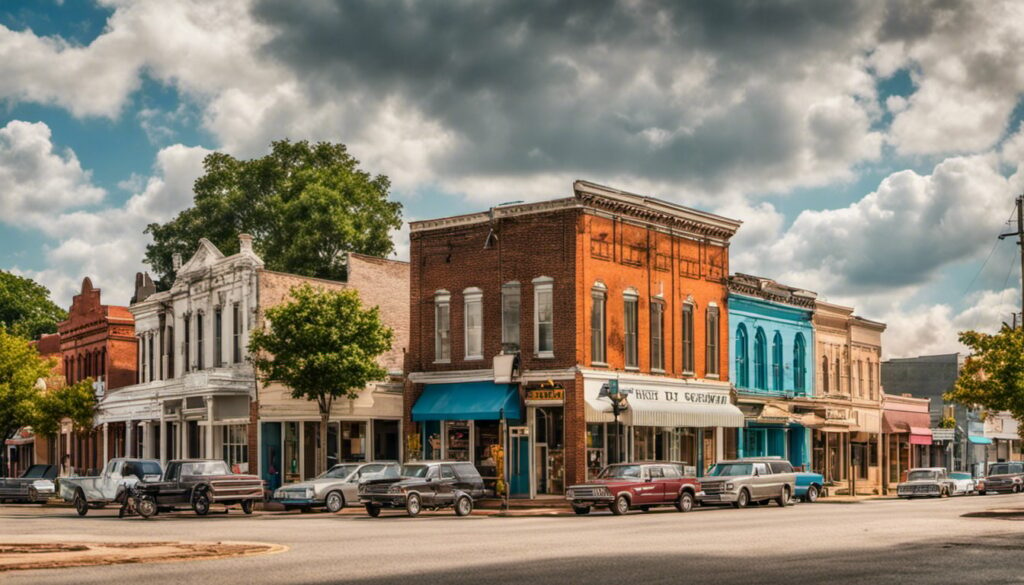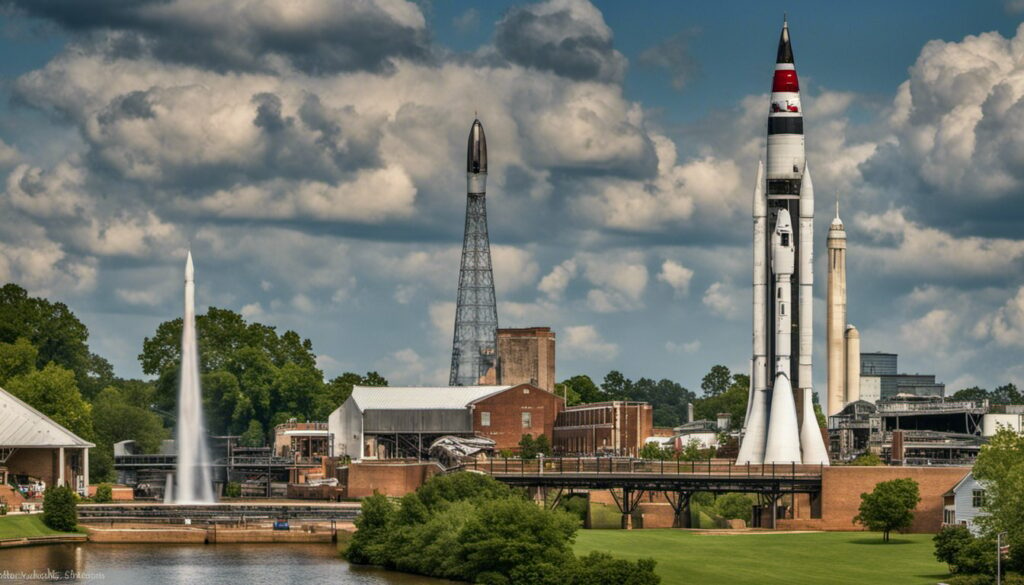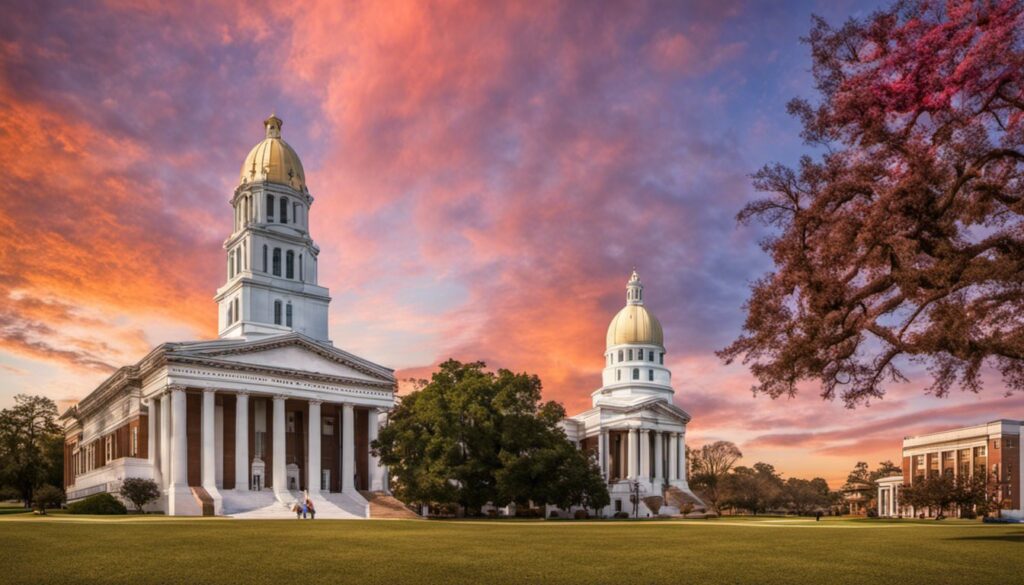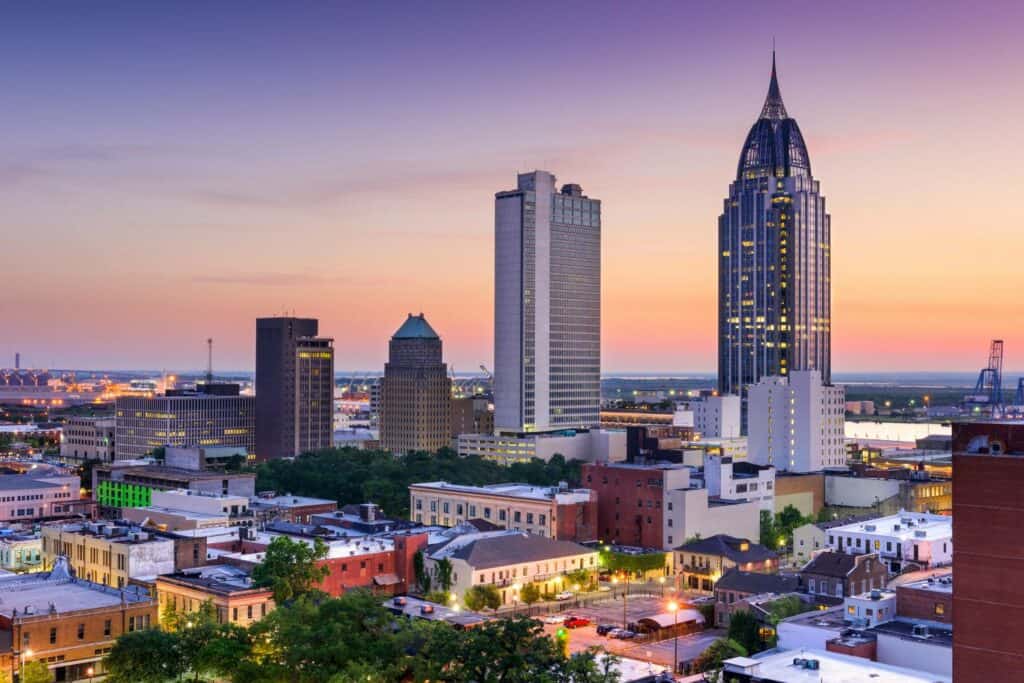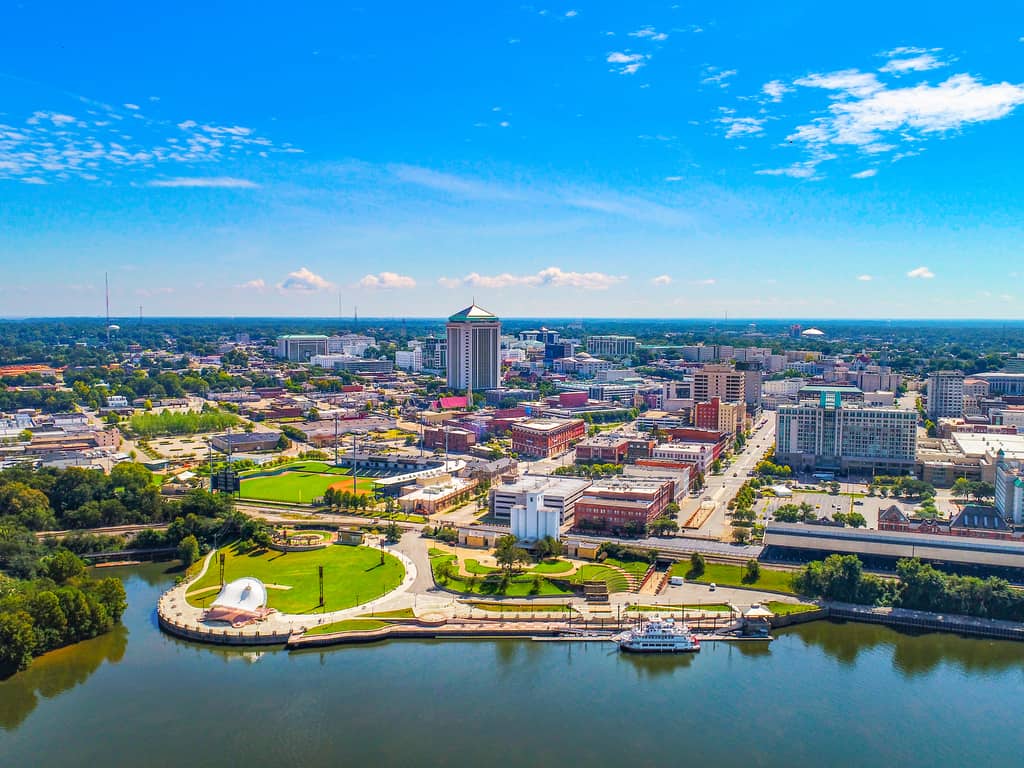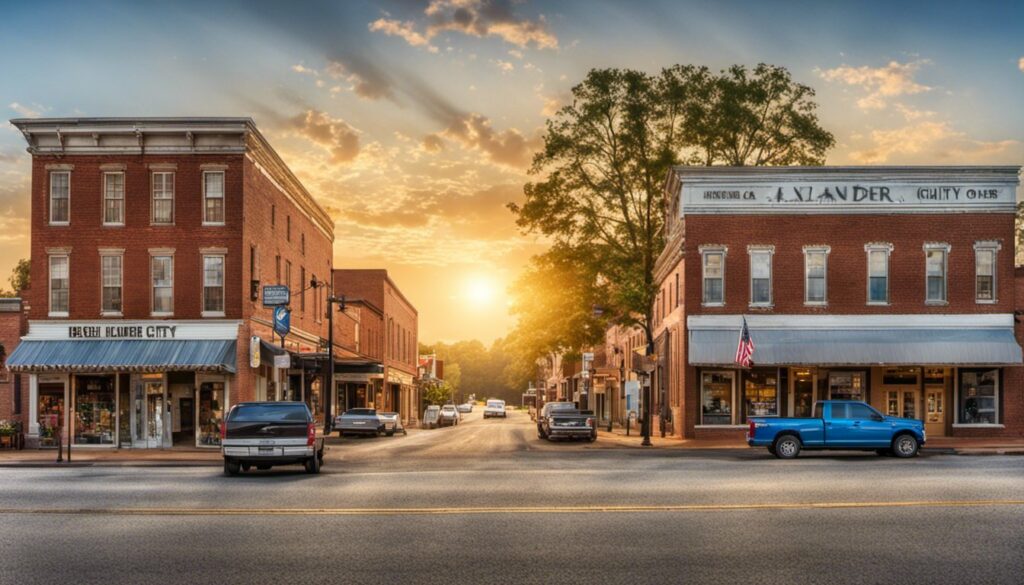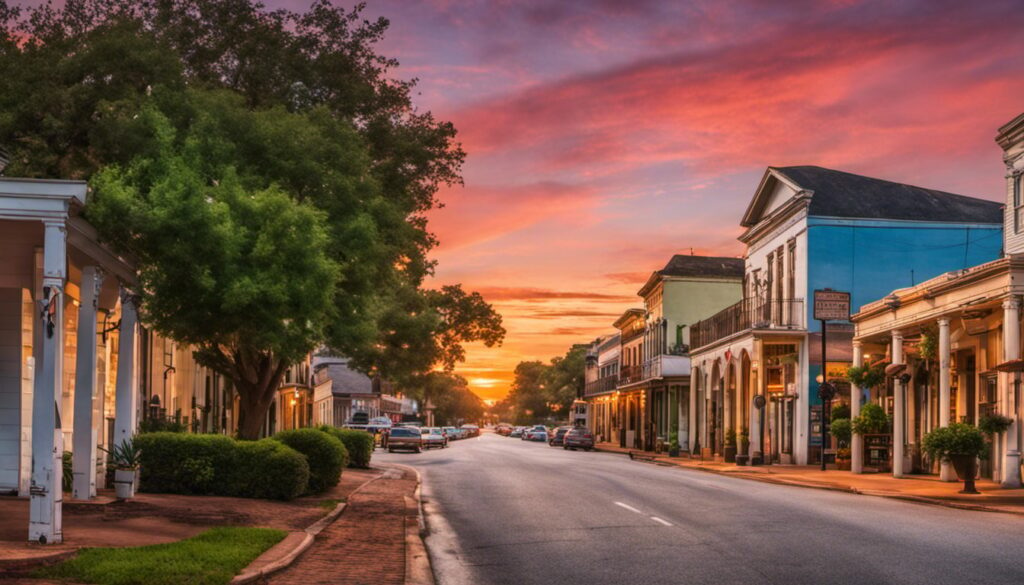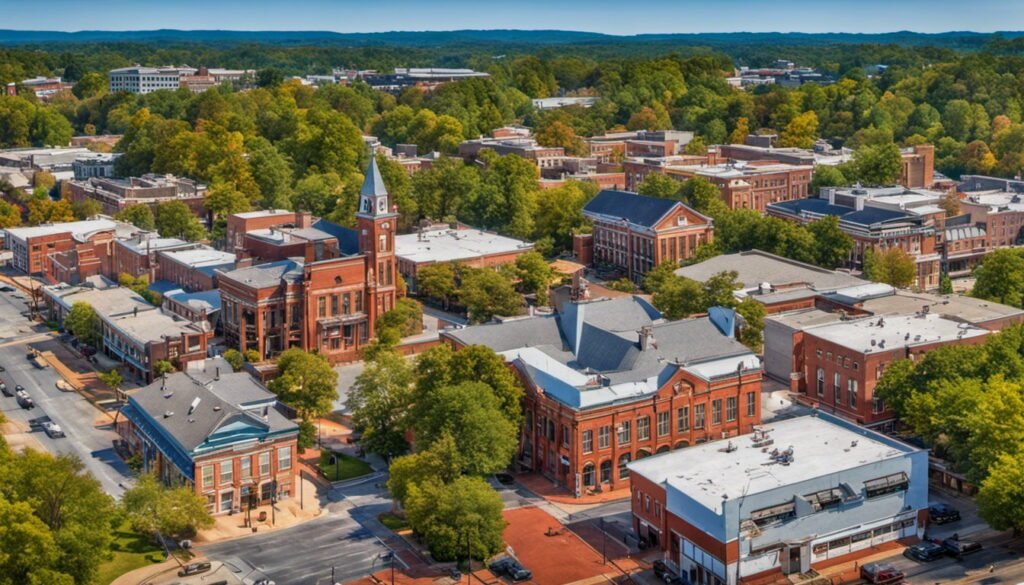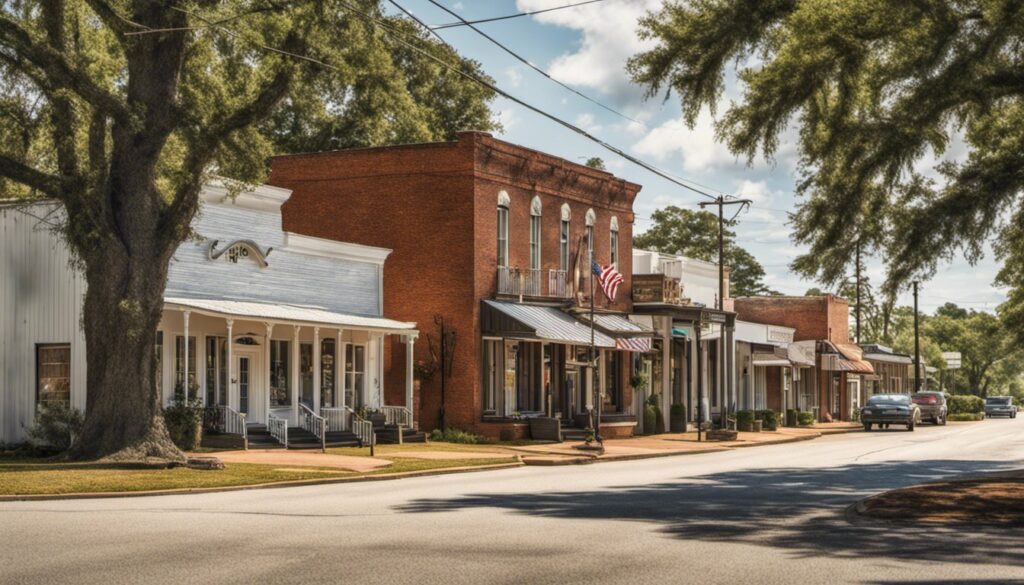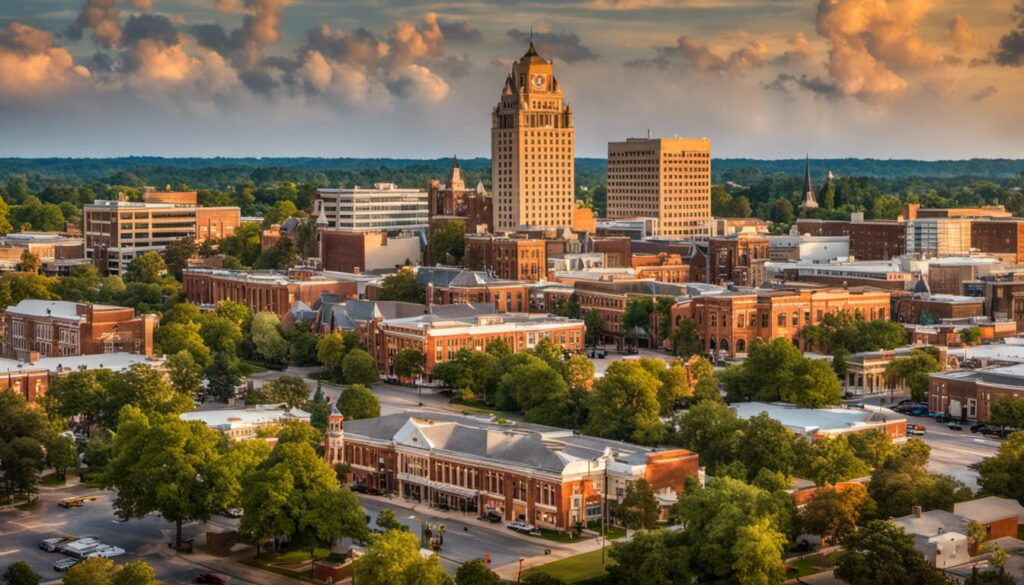Table Of Content
- Excitedly Explore Selma, Alabama: The Ultimate List of Best & Fun Things To Do + Places To Visit!
- Historical Landmarks
- Museums and Exhibits
- Outdoor Activities
- Cultural Experiences
- Dining and Shopping
- Noteworthy Personalities
- Historical Events
- Old Live Oak Cemetery
- Historic Riverfront Park
- Frequently Asked Questions
Excitedly Explore Selma, Alabama: The Ultimate List of Best & Fun Things To Do + Places To Visit!

Are you planning a trip to Selma, Alabama? This charming town offers a variety of activities and attractions that are sure to keep you entertained. Whether you’re interested in history, culture, or just having fun, Selma has something for everyone. In this article, we’ll take a look at some of the best and most fun things to do and places to visit in Selma.
If you’re a history buff, Selma is the perfect destination for you. The town played a significant role in the Civil Rights Movement, and there are several historical landmarks and museums that commemorate this important part of American history. You can visit the Edmund Pettus Bridge, the site of the famous Bloody Sunday march, or explore the National Voting Rights Museum and Institute. Other historical sites include the Old Live Oak Cemetery and the Brown Chapel AME Church.
If you’re looking for outdoor activities, Selma won’t disappoint. The town is located on the banks of the Alabama River, and there are plenty of opportunities for boating, fishing, and hiking. You can also visit the Historic Riverfront Park, which offers a beautiful view of the river and is a popular spot for picnics and family gatherings. And if you’re interested in cultural experiences, Selma has plenty to offer in terms of dining and shopping. From traditional Southern cuisine to unique boutiques and antique shops, there’s something for everyone in this charming town.
Key Takeaways
- Selma, Alabama offers a variety of activities and attractions for visitors of all interests.
- History buffs can explore the town’s significant role in the Civil Rights Movement through historical landmarks and museums.
- Outdoor enthusiasts can enjoy boating, fishing, and hiking, while cultural experiences include dining and shopping.
Historical Landmarks

Selma, Alabama is steeped in history, and there are many landmarks that you can visit to learn more about the city’s past. Here are some of the most interesting historical landmarks that you should definitely check out:
Edmund Pettus Bridge

The Edmund Pettus Bridge is perhaps the most famous landmark in Selma, and for good reason. This bridge was the site of the brutal confrontation between civil rights marchers and law enforcement on March 7, 1965, which came to be known as “Bloody Sunday.” The bridge has since become a symbol of the Civil Rights Movement and is a National Historic Landmark. You can walk across the bridge and visit the interpretive center to learn more about its history.
Brown Chapel AME Church

Brown Chapel AME Church is another important landmark in Selma’s Civil Rights history. It was the starting point for the Selma to Montgomery marches in 1965, and many Civil Rights Movement leaders, including Martin Luther King Jr., spoke at the church. Today, the church is a National Historic Landmark and still holds services.
Old Cahawba Archaeological Park

Old Cahawba Archaeological Park is a must-visit for history buffs. It was once Alabama’s first state capital and a thriving antebellum river town, but it became a ghost town shortly after the Civil War. Today, archaeologists are uncovering long-buried secrets at the site, and you can take a guided tour to learn more about the town’s history.
Water Avenue Historic District

The Water Avenue Historic District is a beautiful area of Selma that is home to many historic buildings. The district is listed on the National Register of Historic Places and features a variety of architectural styles, including Greek Revival, Italianate, and Queen Anne. Take a stroll down Water Avenue to see the stunning buildings and learn more about Selma’s past.
Old Town Historic District

The Old Town Historic District is another area of Selma that is filled with historic buildings. This district is also listed on the National Register of Historic Places and features many well-preserved 19th-century homes. Take a walking tour to see the beautiful architecture and learn more about the city’s history.
Selma’s historical landmarks are a testament to the city’s rich past. Whether you’re interested in the Civil Rights Movement, the Civil War, or just beautiful architecture, there’s something for everyone to enjoy. So, put on your walking shoes and get ready to explore!
Museums and Exhibits

If you’re excited to learn about the rich history of Selma, Alabama, you’ll be happy to know that the city is home to several museums and exhibits that showcase different aspects of the city’s past. Here are some of the must-visit museums and exhibits in Selma:
National Voting Rights Museum

The National Voting Rights Museum is a great place to start your journey in Selma. This museum chronicles the historic journey thousands of African-Americans made for the right to vote. From democratic speeches by the Founding Fathers to struggles incurred during the Civil Rights Movement, this museum displays it all. You’ll find exhibits on the American Voting Rights Movement, ancient Africa, enslavement, and more. You can also take a guided tour to learn more about the stories behind the displays.
Old Depot Museum

The Old Depot Museum is another must-visit museum in Selma. It is located in a historic railroad depot building that was built in 1891. The museum showcases the history of Selma and Dallas County, and features exhibits on the Civil War, the American Voting Rights Movement, and more. You’ll find displays of artifacts, photographs, and documents that tell the stories of the people and events that shaped Selma’s past.
Sturdivant Hall Museum

Sturdivant Hall Museum is a beautiful antebellum mansion that was built in 1853. It is now a museum that showcases the life of the wealthy during the mid-19th century. You can take a guided tour of the mansion and see the exquisite furnishings, paintings, and sculptures that adorned the home. You’ll also learn about the history of the house and the people who lived there.
Alabama River

The Alabama River is a vital part of Selma’s history, and there are several exhibits and displays that showcase its significance. You can visit the Selma Interpretive Center to learn about the National Historic Trail that follows the route of the Selma to Montgomery March. You can also take a riverboat tour to see the city from a different perspective and learn about the river’s importance to Selma’s economy.
Whether you’re interested in voting rights, stories of slavery, displays of cannons, or the history of Selma’s river, there’s a museum or exhibit in Selma that will satisfy your curiosity.
Outdoor Activities

Selma, Alabama is a great place to enjoy outdoor activities. From exploring parks to hiking trails, there are plenty of options to choose from. Here are two of the best outdoor activities in Selma:
Riverfront Park

Located on the banks of the Alabama River, Riverfront Park is a great place to enjoy the natural beauty of Selma. The park offers a variety of activities, including fishing, boating, and picnicking. There are also walking trails that wind through the park, providing a great opportunity to explore the area.
One of the highlights of Riverfront Park is the Selma Interpretive Center, which provides visitors with a fascinating look at the history of Selma and the Civil Rights Movement. The center features exhibits, artifacts, and interactive displays that are both educational and entertaining.
Bloch Park

Bloch Park is another great outdoor destination in Selma. The park features a variety of activities, including a playground, walking trails, and picnic areas. There are also several sports fields and courts, making it a popular spot for sports enthusiasts.
One of the highlights of Bloch Park is the beautiful lake, which is home to a variety of wildlife. Visitors can rent paddle boats and canoes to explore the lake, or simply relax and enjoy the scenery.
Whether you’re a nature lover or a sports enthusiast, Selma has plenty of outdoor activities to offer. So grab your gear and head out to Riverfront Park or Bloch Park for a day of fun in the sun!
Cultural Experiences

If you’re looking for a taste of Selma’s rich history and culture, there are plenty of options to choose from. Here are a few must-visit cultural experiences to add to your itinerary:
Jackson Home Historic Site
Step back in time at the Jackson Home Historic Site, the former residence of Dr. A.G. Jackson, a prominent African American physician in the early 20th century. This beautifully restored home offers a glimpse into the daily life of a successful black family during a time of segregation and discrimination. Take a guided tour to learn more about the Jackson family’s impact on the Selma community and the Civil Rights Movement.
Downtown Selma

Downtown Selma is a treasure trove of historic architecture, charming shops, and delicious restaurants. Take a stroll down the brick-paved sidewalks and admire the antebellum mansions that line the streets. Be sure to stop by the Selma to Montgomery National Historic Trail Interpretive Center, which tells the story of the 1965 Voting Rights March from Selma to Montgomery.
Local Art

Selma is home to a thriving arts scene, with galleries and studios showcasing the work of local artists. Visit the Selma Art Guild Gallery to see paintings, sculptures, and other works of art from talented artists in the area. Don’t miss the chance to attend a performance at the Walton Theater, a beautifully restored 1930s-era movie palace that now hosts live theater, concerts, and other events.
Whether you’re interested in historic sites, Civil Rights history, or local culture, Selma has something to offer every visitor. Make sure to add these cultural experiences to your list of must-visit attractions during your trip to this charming Alabama town.
Dining and Shopping

Selma, Alabama is a great destination for foodies and shoppers alike. Whether you’re looking for a quick lunch or a place to indulge in some retail therapy, Selma has something for you.
Dining

Selma is known for its delicious fried food, and you won’t be disappointed with the options available. Head to Lannie’s Bar-B-Q Spot for some of the best fried chicken in town. If you’re in the mood for something a little different, try the fried catfish at Mark’s Mart. It’s crispy on the outside and tender on the inside – a true delight for your taste buds.
For a quick lunch, stop by the Selma Cafe. They offer a variety of sandwiches and salads that are perfect for a mid-day break. If you’re in the mood for something heartier, try the meatloaf or chicken pot pie.
Shopping

If you’re a car enthusiast, you won’t want to miss the opportunity to visit the Craig Automotive showroom. They have a great selection of classic and vintage cars that are sure to impress. And if you’re looking for something a little more practical, head to the Walmart Supercenter for all your shopping needs.
Antique lovers will want to check out the Selma Antique Mall. They have a wide selection of vintage items, from furniture to jewelry to collectibles. And if you’re looking for something more modern, head to the Selma Square Shopping Center. They have a variety of stores, including clothing, electronics, and home goods.
Overall, Selma has a great mix of dining and shopping options that are sure to please. Whether you’re in the mood for fried food or looking for the perfect antique, you’ll find it here.
Noteworthy Personalities
Selma, Alabama is a city rich in history, and it has been home to many noteworthy personalities. Here are a few individuals who have contributed to Selma’s legacy:
- Martin Luther King Jr.: Selma played a pivotal role in the Civil Rights Movement, and Martin Luther King Jr. was one of the most prominent figures of that time. He led the march from Selma to Montgomery in 1965, which was a significant event in the fight for voting rights.
- Sam: Sam is a local artist who has created many beautiful murals throughout Selma. His work can be seen on buildings throughout the city, and it adds a unique and vibrant touch to the community.
- Mayor: The current mayor of Selma is a dedicated public servant who is committed to improving the city. Under his leadership, Selma has seen significant progress in areas such as economic development and infrastructure.
- Dr. Martin Luther King Jr.: Dr. Martin Luther King Jr. was a frequent visitor to Selma during the Civil Rights Movement. He gave speeches and organized events that helped to bring attention to the injustices faced by African Americans in the South.
- Foot Soldiers: The Foot Soldiers were the brave men and women who marched alongside Martin Luther King Jr. during the Selma to Montgomery march. These individuals risked their lives to fight for their rights, and their sacrifices helped to bring about change.
These are just a few of the many noteworthy personalities who have made an impact on Selma, Alabama. Whether they are artists, activists, or public servants, they all share a common goal: to make Selma a better place for everyone.
Historical Events

Selma, Alabama has a rich history that is full of significant events that have shaped the city’s culture and identity. Here are some of the historical events that you should know about when visiting Selma:
- Civil War: Selma played a crucial role in the Civil War as it was home to one of the South’s most important military manufacturing centers. The city was also the site of the Battle of Selma, which was fought on April 2, 1865. You can visit the Old Depot Museum to learn more about Selma’s role in the Civil War.

- Bloody Sunday: On March 7, 1965, civil rights activists attempted to march from Selma to Montgomery to demand voting rights for African Americans. However, they were met with violence from state troopers in what became known as “Bloody Sunday.” This event was a turning point in the Voting Rights Movement, and you can visit the Edmund Pettus Bridge to see where the march began.

- Voting Rights Movement: Selma was at the forefront of the Voting Rights Movement, and it was the site of many protests and demonstrations. The National Voting Rights Museum is a great place to learn about the movement and its impact on American history.

- Right to Vote: Selma was also the site of the Selma to Montgomery marches, which were a series of three protests that took place in 1965. These marches were organized to demand voting rights for African Americans and played a significant role in the passage of the Voting Rights Act of 1965.

- Alabama’s State Capital: Selma was the capital of Alabama for a brief period during the Civil War. The city has a rich political history, and you can learn more about it at the Old Cahawba Archaeological Park.

- Episcopal Church: The St. Paul’s Episcopal Church in Selma is a historic landmark that played a significant role in the Civil Rights Movement. The church was the site of many meetings and demonstrations, and it was where Martin Luther King Jr. delivered a speech in 1965.

Selma, Alabama is a city that is steeped in history, and there are many places where you can learn about its past. Whether you’re interested in the Civil War, the Voting Rights Movement, or the city’s political history, Selma has something for everyone.
Old Live Oak Cemetery

If you’re looking for a unique and fascinating place to visit in Selma, Alabama, the Old Live Oak Cemetery is a must-visit location. This cemetery is a National Historic Register site and is home to many notable graves, including those of Vice President William Rufus King and Alabama’s first African American Congressman Benjamin Sterling Turner.
As you stroll through the cemetery, you’ll be surrounded by ancient oaks and magnolias draped in Spanish moss. The atmosphere is serene and peaceful, making this a great place for a reflective walk or a picnic.
In addition to the notable graves, there are also many interesting monuments to explore, including those dedicated to Confederate soldiers and prominent Selma residents. The cemetery is well-maintained, and the staff is friendly and knowledgeable, making it a great place to learn about the rich history of Selma.
Whether you’re a history buff or just looking for a unique and peaceful place to spend an afternoon, the Old Live Oak Cemetery is a must-visit location in Selma, Alabama. Be sure to bring your camera and take some time to appreciate the beauty and history of this incredible site.
Historic Riverfront Park

If you’re looking for a peaceful and scenic spot to relax, Historic Riverfront Park is the perfect place to be. Set on the banks of Alabama River, this 12-acre park offers incredible vistas, shady trees, and great views of the cityscape.
The park is complete with a beautiful timber bridge and overlooks the iconic Edmund Pettus Bridge. It’s a great spot for a picnic, a walk, or just to sit and watch the boats go by. You can even take a stroll along the riverwalk and enjoy the fresh air and beautiful scenery.
One of the unique features of the Historic Riverfront Park is the Gas House Museum. This museum is located within the park and showcases the history of gas production in Selma. You can learn about the history of gas production and the role it played in the development of Selma.
Overall, Historic Riverfront Park is a must-visit spot in Selma. Whether you’re looking for a peaceful place to relax or an educational experience, this park has something for everyone.
Frequently Asked Questions
What are some must-see attractions in Selma, Alabama?
Selma, Alabama is a city rich in history and culture, with plenty of attractions to explore. You can start by visiting the Selma Interpretive Center, which offers a comprehensive look at the city’s role in the Civil Rights Movement. You can also take a stroll through the historic downtown area and see the many beautifully preserved antebellum homes. If you’re interested in outdoor activities, check out the Selma to Montgomery National Historic Trail or the Alabama River.
Where can I find the best hotels in Selma, Alabama?
Selma has a range of accommodation options to suit all budgets and preferences. Some of the best hotels in the city include the Hampton Inn Selma, the Comfort Inn Selma, and the Holiday Inn Express Selma. These hotels offer comfortable rooms, great amenities, and convenient locations.
What is the significance of the Edmund Pettus Bridge in Selma?
The Edmund Pettus Bridge is a historic landmark in Selma, Alabama, that played a significant role in the Civil Rights Movement. It was the site of the Bloody Sunday march in 1965, where civil rights activists were brutally attacked by police officers. The bridge has since become a symbol of the struggle for civil rights and social justice.
How long does it take to walk across the Edmund Pettus Bridge?
The Edmund Pettus Bridge is approximately 1,248 feet long, and it takes around 15-20 minutes to walk across at a leisurely pace. However, you may want to take your time and appreciate the historical significance of the bridge and the surrounding area.
What events led to the Civil Rights Movement in Selma, Alabama?
The Civil Rights Movement in Selma, Alabama, was sparked by a series of events, including the arrest of civil rights leader Dr. Martin Luther King Jr. in 1963 and the murder of civil rights activist Jimmie Lee Jackson in 1965. These events, along with many others, led to the Selma to Montgomery marches and the eventual passage of the Voting Rights Act of 1965.

